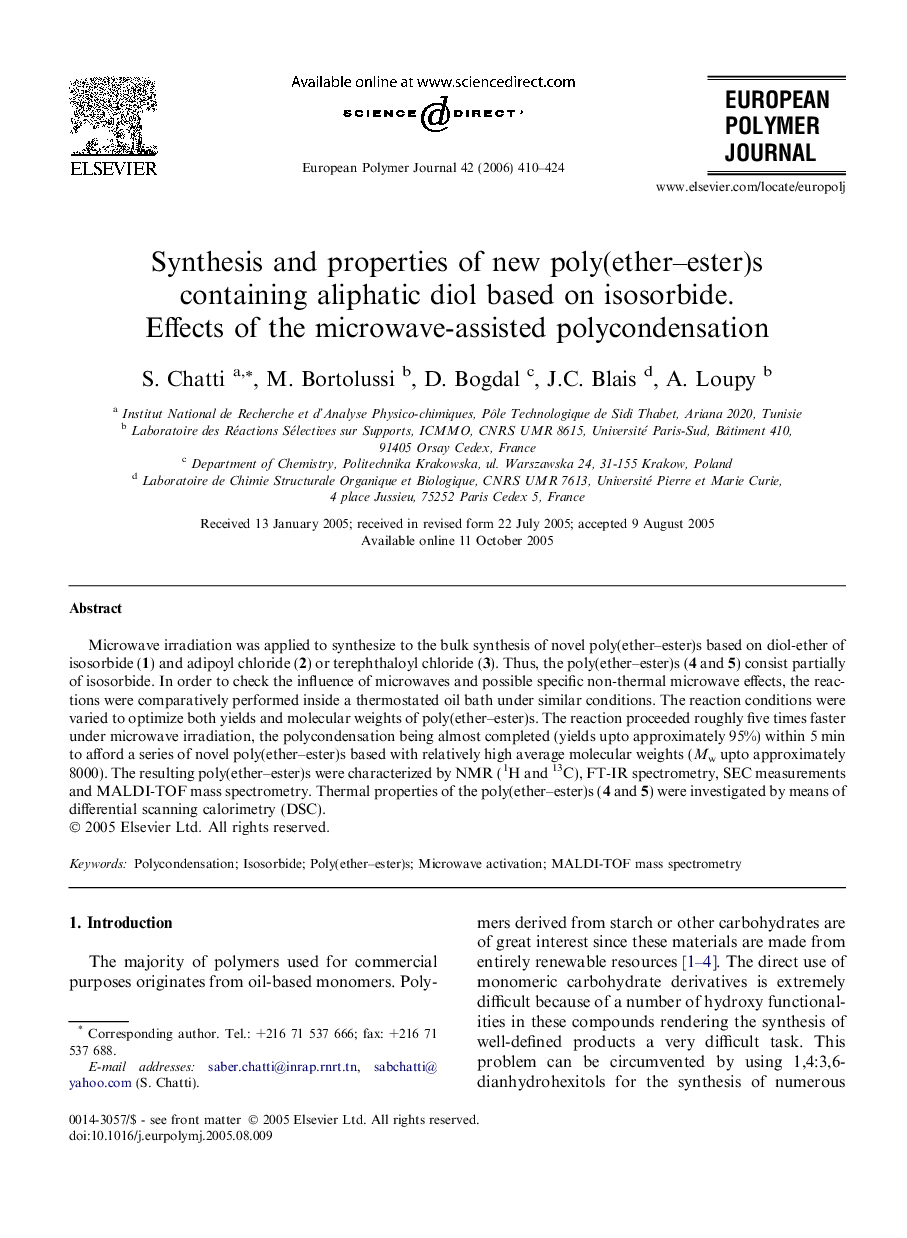| Article ID | Journal | Published Year | Pages | File Type |
|---|---|---|---|---|
| 1404009 | European Polymer Journal | 2006 | 15 Pages |
Microwave irradiation was applied to synthesize to the bulk synthesis of novel poly(ether–ester)s based on diol-ether of isosorbide (1) and adipoyl chloride (2) or terephthaloyl chloride (3). Thus, the poly(ether–ester)s (4 and 5) consist partially of isosorbide. In order to check the influence of microwaves and possible specific non-thermal microwave effects, the reactions were comparatively performed inside a thermostated oil bath under similar conditions. The reaction conditions were varied to optimize both yields and molecular weights of poly(ether–ester)s. The reaction proceeded roughly five times faster under microwave irradiation, the polycondensation being almost completed (yields upto approximately 95%) within 5 min to afford a series of novel poly(ether–ester)s based with relatively high average molecular weights (Mw upto approximately 8000). The resulting poly(ether–ester)s were characterized by NMR (1H and 13C), FT-IR spectrometry, SEC measurements and MALDI-TOF mass spectrometry. Thermal properties of the poly(ether–ester)s (4 and 5) were investigated by means of differential scanning calorimetry (DSC).
